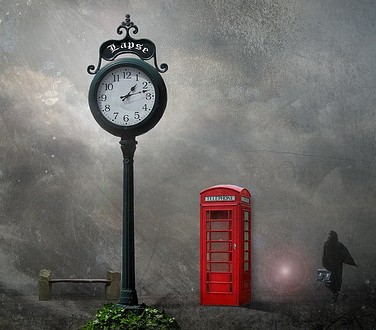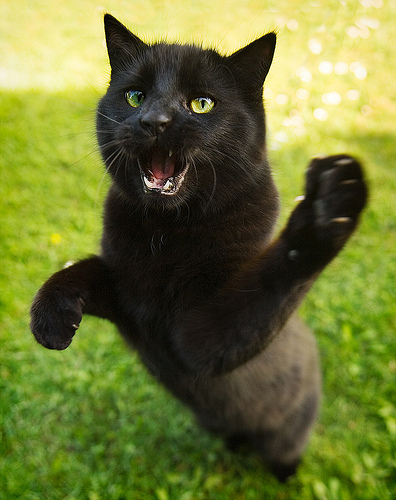Motifs for Cohesion and Depth
Hard to believe we are now about to examine the twelfth and final pillar of construction—motifs. We’ve spent the whole year taking a long, hard look at what’s needed to support a weighty story, and I hope by now you’ve used the inspection checklists (at the bottom of each post) to analyze every aspect of your novel to make sure it’s built with solid, enduring materials.
Glue and Superglue
You may wonder why I consider motifs an important pillar of novel support. Surely not every novel in every genre needs to contain a motif (or two or five), but motifs can supercharge your story, and it’s very likely that if you add some, you can make your novel more interesting and memorable. I noted earlier that themes are the glue that bind the elements of your novel. Well, motifs are like Superglue. A little goes a long way.
Motifs can make the difference between an okay story and a terrific one. Novels that present powerful motifs reach readers on multiple levels, for we humans resonate with symbols, and although a motif isn’t strictly (or always) a symbol of some sort, a motif carries symbolic import to some extent.
Symbolism Is at the Heart of Culture
Cultures from the dawn of time have utilized symbols, and in many cultures these symbols are not only foundational, they contain deep meaning and often are used to instruct and define their society. I don’t mean to go into a history lesson, for I’m sure you understand what I’m talking about. Motifs and symbols, in other words, can reach us on deep, primal, unconscious levels.
Is that a good thing? I believe it is. If you followed this blog in 2012 or have read through the posts from the section Writing the Heart of Your Story (or have studied the book), you’ll know I’m all about reaching not just the heart of your story but your own heart and the heart of the reader. To me, a novel is a bridge from one heart to another—the writer’s to the reader’s. Motifs are an element you can use in constructing your novel so that you create that bridge.
The Difference between Motif and Theme
Let’s first make the distinction between theme and motif, since we’ve already looked at what theme is and its importance in your novel. Theme is so important, it’s one of the four corner support pillars of any story, and your novel may have a number of themes weaving through that also work to tie all your elements together.
Your novel may explore themes like bigotry, greed, revenge, or forgiveness, and the plot and characters embody and showcase these themes to get across your “take-home” message for your book (if you have one). Theme is what your book “is really about.” (If you haven’t taken the time to read the posts on theme for this course on novel construction, start with this one here.) But a theme is not a motif.
Merriam-Webster’s defines motif this way: “A usually recurring salient thematic element (as in the arts); especially a dominant idea or central theme.” For our purposes, for ease of understanding and application, I prefer to leave theme out of this definition, treating it as a separate entity altogether. But the key to motif is in those two words: recurring and salient. (Salient meaning something that juts out, rises above, projects significantly or conspicuously.)
Motifs are symbolic elements packed with inference. Motifs can be a “thing”—some object that makes a repeated appearance in your novel. Or they can be word or phrase, a concept, an image—just about anything that can be repeated with significance and symbolism. The weather can be a motif, for example, if each time something terrible is about to happen, “lightning” strikes.
Image Systems for Your Novels
In last year’s course on this blog—Shoot Your Novel—I spoke at length about image systems that filmmakers utilize to give this kind of depth and cohesion to a film. Without reiterating too much, an image system comprises specific images, colors, phrases, symbols—essentially motifs—among many other things. Books like The Bluest Eye (Toni Morrison) and Riders of the Purple Sage (Zane Grey) used a specific color repeatedly as a motif (not hard to guess which color, right? Bringing your motif into your title, as you can see, adds that powerful and memorable cohesion to the story).
I mentioned various movies in those posts that brought motifs into play, such as the element of water in What Lies Beneath, the play and mention of light in K-Pax, and the fairy tale elements in The Silence of the Lambs. Great storytellers will spend time thinking of motifs they can infuse into their story to give it greater depth.
Repetition Is the Key
Repetition, as we all know, is what helps us remember. My psychology professor in college said that if you repeat something (like a person’s name) aloud seven times in a short amount of time (such as in conversation), that word or phrase will transfer from the part of the brain that stores short-term memory to the part that stores long-term memory (or something like that. I learned this a lot of years ago and, sadly, I did not repeat his exact words seven times aloud to ensure I remembered it correctly!).
But I hope you get my point here. If you use a motif in your book repeatedly, readers are going to notice, and when they recall your book months later, often those motifs will be the main things they do remember. At least that’s how I am. When I think of Leif Enger’s novel Peace Like a River, the first thing that comes to mind is the repeated phrase that serves as a powerful motif in his story—his character young Reuben Land saying, essentially, “This is what I saw. This is what I heard. Make of it what you will.”
In To Kill a Mockingbird the motif of birds is reiterated in not just words but conceptually. A bird is used in the title, drawn from a key line in the story that serves as the theme—about mockingbirds being harmless and so shouldn’t be harmed. In addition, the key character’s name is Finch—which is the name of a very small bird (which might seem to be incapable of putting up a big fight against a huge, vicious bird [read: racism]).
The mockingbird is a symbol that glues Harper Lee’s story together, just as the mockingjay is a symbol used very literally in The Hunger Games—as the main character, Katniss,who is given the label “The Mockingjay”—uses the call of the mockingjay, and is given a mockingjay pin to wear, which has rebellion written all over it. Even the trailers for the movies use the short mockingjay whistle-call as an identifier for the films.
Name That Tune
How many of us repeated the musical pattern that was a key element in communicating with aliens in Close Encounters of the Third Kind? I still can hum it after decades. Why? Because it was used as a motif repeatedly through the movie (and is a main element of the plot). Sorry if I reminded you about this—it will probably be stuck now in your head for days.
So you can see that a motif can be many things, even a few musical notes. Although it’s probably not going to be all that effective to describe a musical ditty in your novel, you have plenty of other ways to present motifs via the printed word.
Do you see how powerful a motif is? Do you want readers to remember your novel years—maybe even decades—from now? One way (in addition to writing a terrific story that has all the other eleven pillars constructed well) is to use motifs.
We’ll explore this last pillar of novel construction further in next week’s post.
What motifs in a novel or film immediately come to your mind? Do you have one special motif you are using in your novel? If not, can you think of one that will tie in with your theme and help form an image system for your story?
Inspection Checklists:
Inspection Checklist 1-concept with a kicker
Inspection Checklist 2-protagonist with a goal
Inspection Checklist 3-conflict with high stakes
Inspection Checklist 4-theme with a heart
Inspection Checklist 5-Plots and Subplots in a String of Scenes
Inspection Checklist 6-Secondary Characters with Their Own Needs
Inspection Checklist 7-Setting with a Purpose
Inspection Checklist 8-Tension Ramped to the Max
Inspection Checklist 9-Dialog Compressed and Essential
Inspection Checklist 10-Voice Unique for Each Character
Inspection Checklist 11-Writing Style Concise and Specific
Photo Credit: h.koppdelaney via Compfight cc












Susanne – I LOVE this post and totally agree about using motifs in fiction. I shared this at my FB page. Your dedication to helping writers is amazing. I hope your site wins!
Thanks, Michelle!
I’ve struggled with understanding themes and motifs and even referred to Sparks notes on certain books I read. Thanks for making this so clear.
Glad to help. I have two more posts coming on the topic. I rarely see (if ever?) any posts or articles on motifs, and I wonder why more attention isn’t given to this very important element in a novel. All the best (and my favorite) novels have strong motifs running through them.
“…a novel is a bridge from one heart to another.” I would love to paint this on a plaque and mount it over my computer desk. In fact, I think I will 😉
That’s nice! It could use a sweet photo of a bridge too 🙂
Brilliant idea! When I get one worked up, I’ll send you a copy.
Hello. Long time reader, first time commenter.
First off all, I absolutely love this series that you’ve been doing all year. Your checklists have helped me to develop the novel (my first) that I began writing this year for NaNoWriMo. November is over, but I still have much of the book to write.
I am writing a sci-fi/fantasy novel. The world I have created has ten moons, which correspond to ten elements and ten colors. Does that count as a motif?
Thank you for posting all of the amazing advice that you have been.
Thanks! If the colors and elements are only mentioned, they are just details. A motif must be repeated and have some sort of symbolism, preferably for the character(s). The next couple of posts will go into this further, but it’s a good question!
In this world, all forms of magic are based on one of the elements and that type of magic is made more powerful when the corresponding moon is in effect.
While reading this post, I clicked on the link leading to your last year’s post about image systems, and while reading THAT, noticed you said “(Clarice is the daughter of a senator: i.e., royalty)”. Clarice Starling is the daughter of a police officer. Catherine Martin, Buffalo Bill’s latest intended victim, is the daughter of the senator. Don’t know if pointing out that small error more than a year after you published the post has any significance.
Thanks for pointing that out. I actually picked up that bit of info from another article. Didn’t check the fact (or not fact), which I usually do. Teaches me a lesson, huh?
Great post! I can’t believe we’re almost through the Twelve Pillars Course!
These terms are discussed a lot in music theory. So, I got out my old music dictionary (Hal Leonard Pocket Music Dictionary), to help clarify these again in my own mind. Hope it helps all of you too. 🙂
I’ll use Lord of the Rings soundtrack, because a lot of people will be familiar with it.
A theme is “the musical subject of a piece (usually a melody)”. Think of the opening melody of the track “Concerning Hobits”. It’s rather long – the equivalent of two lines of poetry or two short sentences.
A Motif is “a short… pattern or idea that runs through a piece.” It is much shorter than a theme, and as you say for writing, it is used to help set the tone. In the same track, it would be the three upward notes that are repeated throughout by the strings. (This mirrors the first three notes of the theme, which gives cohesion to the piece overall.)
That’s a great comparison. I have all the LOTR CDs and love all the motifs for each character and land. Similar to how John Williams did all the Star Wars movies, you get an emotional connection/resonance with each character and place as the musical motif cements all your feelings and impressions, like glue. I really love thinking of motifs as the glue that holds a big story (or movie) together.
I am relieved to find this post. I missed the other 11 but will go through those too.
I guess my motif would be kaleidoscope of colors? In the novel I am working on, it is significant in some way I just don’t know how yet.
Thank you for this!
Colors, as I mentioned, can be powerful visual motifs, so if you use some colors to denote specific things and repeat them in places in the book, they may work very well.
Thanks!
This really hit home. I already have “moon” in my title and it comes into play strongly at the end, but I never paid it much attention throughout. I will on this rewrite.
Thanks!
The moon can have a lot of meaning and symbolism on so many levels, so think about doing a word-association exercise with it to come up with some ways it can be used repeatedly in your story and enhance your themes.
Will do! Thanks, again.
i just finished a Richard Russo novel and Cape Cod was a strong motif throughout. I hadn’t thought about this for my novel and will take a closer look as I rewrite. Thank you for this great blog
Places are not usually motifs. They are rich, live settings that characters interact with. Think of a motif as something small, symbolic. A place wouldn’t be a motif but a statue in a park or a bench could symbolize much. Great motifs are things that can work on many levels.
Understanding the terms that describe and define what we writers do is hugely empowering – I learnt this from a critique partner 🙂 I was lucky enough to have some great feedback early on, and the reader had identified two recurring motifs that I, as the writer, had not even consciously realised were there. Well – I knew vaguely, but not enough to make best use of them.
Being made aware,then studying up on how others use motifs, gave me the ability to use what I had done unconsciously in a more considered, and hopefully, more effective way.
That’s also why I love reading your posts – there is always something more to learn or come to grips with, and then try to master that skill.
Never a dull moment for writers, right? 🙂
Thanks, Piper. Glad these posts help. Motifs are rarely discussed, but I think they are key to making a good novel a great one.
Let me first state than your 12 guidelines are posted as my background on my home PC.
The one that just doesn’t trigger immediate understanding is this one — Motifs for cohesion and depth.
No matter how often I read this post, and try and fathom the intent, that phrase falls flat. It just doesn’t have the instant understanding punch that the others do.
Is there any possibility that you could rephrase this into a more digestible sound byte?
Do a search on my blog for motifs, symbols, image systems. I have a lot more information on those topics. Motifs act as a glue (cohesion) to showcase the themes and issues of the heart of your story. They give depth to a story because they make readers think and feel.